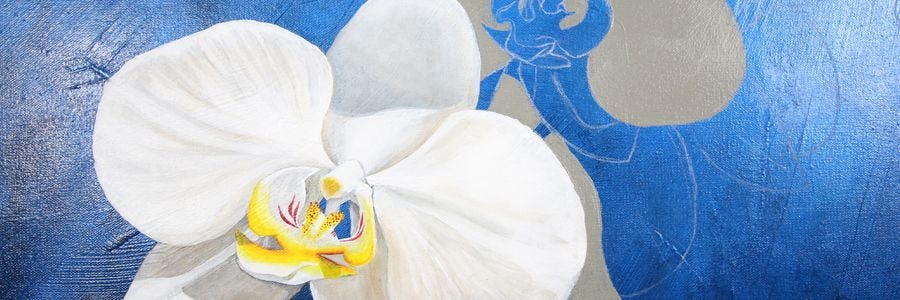Realism is recognised as the first modern movement in art, a style where imagined ideations were rejected in favour of a more accurate depiction of nature, contemporary life and still life paintings.
For a work to look realistic, elements need to be rendered in a particular way, and that is achieved with soft transitions between colours, the depiction of shadows and reflected light. In painting terms, these effects are suggested by the blending of colours into one another.
To suggest the effects with acrylic paint that have been outlined above, we need to exploit its benefits.

Here are our top tips for painting realistic flowers in acrylic paint:
1) Paint the background in one application and paint flowers onto the background. This has to be done so that you don’t create a mess by trying to cut a background in around the flowers. “Cutting in” (the process of creating a seamless edge by running a separate brush along the outline) can be done with oil paint and watercolour to an extent, as they blend and dry slower.
2) Paint a base tone of white or neutral grey over any areas that will be focal elements. Because the background has to be painted in one application, the flowers will require a light base tone, also called a ‘ground’. If you don’t do this before you start painting your flowers, the underneath colour will alter the top colour as acrylics are not 100% opaque.
3) To suggest reflected light and translucence within the petals, lay in the colour over the first base tone and glaze the translucent petal colour or tone over the top. This will create a luminous light from within.
4) To suggest a soft tone within your flower petals, it is best to build up multiple translucent coats on top of one another. The coats can be then be hair dried to touch dryness in 60 seconds, a good attribute of acrylic paint.

5) When painting white flowers, remember to try to get as much variety into the white tone as you can.
6) Try to keep your silhouette of flowers as clean as you can but not so clean as to look as though they have been done with too much of a sense of design. Strive to find that happy medium.
7) It is good practice to paint from dark to light when painting flowers with acrylic.
8) Don’t try to cover everything in one coat if the paint is not opaque enough. The colour can look flat and tones will look deeper and denser with multiple thin layers.

9) Mix your own greens as they look more realistic than directly from the tube.
10) Use an acrylic retarder to slow down the drying. This way you don’t feel like you have to rush to get your layers on.
And that’s it! Happy painting.





























